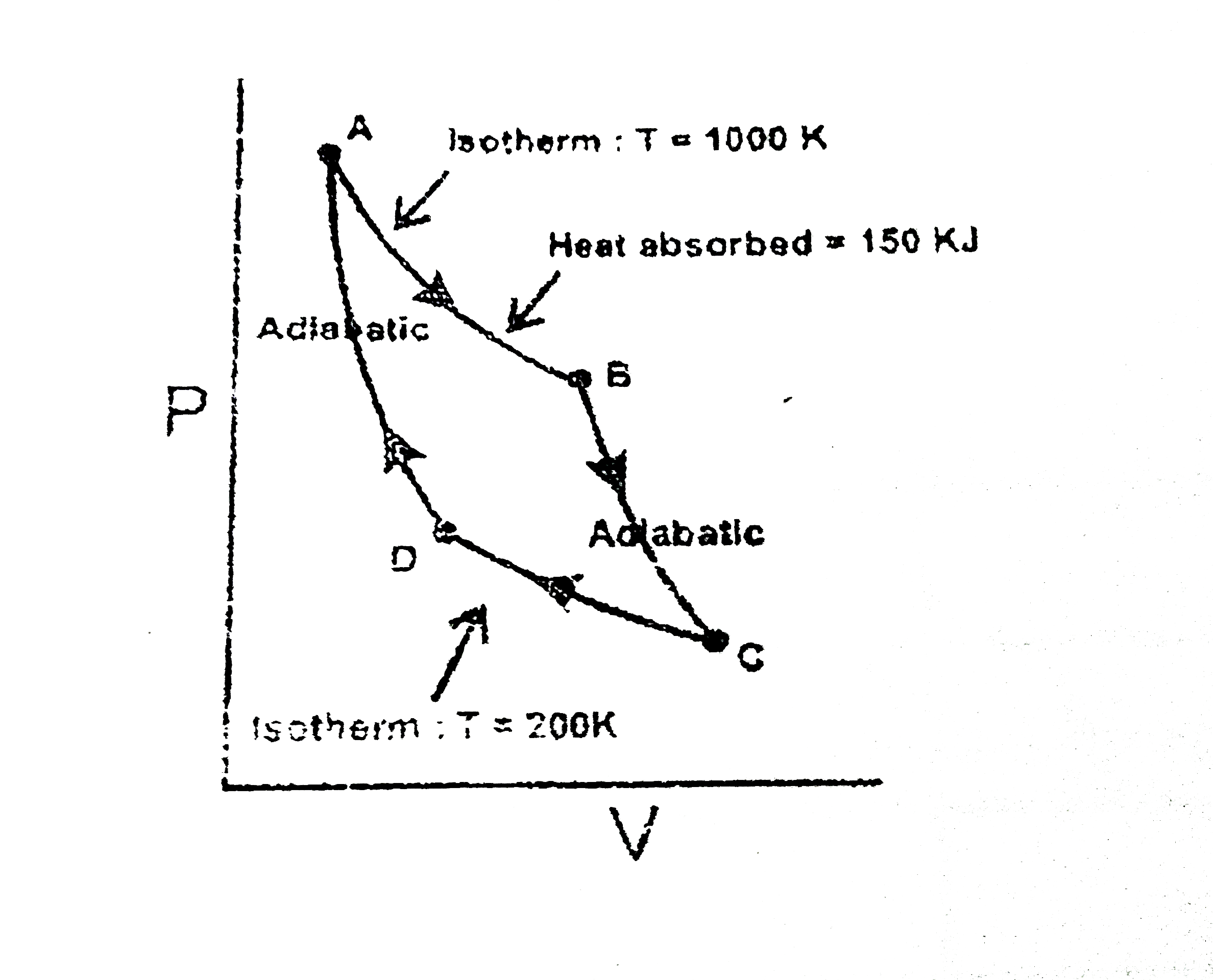What is the Gibbs Helmhotz equation ?
Step-by-Step Solution:
1. Identify the Gibbs Helmholtz Equation: The Gibbs Helmholtz equation is a fundamental equation in thermodynamics that relates the change in Gibbs free energy (ΔG) to the change in enthalpy (ΔH) and the change in entropy (ΔS) of a system.
2. Write the Equation: The Gibbs Helmholtz equation is expressed as:
ΔG=ΔH−TΔS
where:
- ΔG = change in Gibbs free energy
- ΔH = change in enthalpy
- T = absolute temperature (in Kelvin)
- ΔS = change in entropy
3. Explain the Terms:
- ΔG (Gibbs Free Energy): This represents the maximum reversible work that can be performed by a thermodynamic system at constant temperature and pressure.
- ΔH (Enthalpy): This is the total heat content of a system, which reflects the internal energy plus the product of pressure and volume.
- T (Temperature): This is the absolute temperature of the system, measured in Kelvin.
- ΔS (Entropy): This represents the degree of disorder or randomness in a system.
4. Conclusion: The Gibbs Helmholtz equation is crucial for understanding the spontaneity of processes and the relationship between energy, temperature, and entropy in thermodynamic systems.
---
ΔG=ΔH−TΔS
where:
- ΔG = change in Gibbs free energy
- ΔH = change in enthalpy
- T = absolute temperature (in Kelvin)
- ΔS = change in entropy
- ΔG (Gibbs Free Energy): This represents the maximum reversible work that can be performed by a thermodynamic system at constant temperature and pressure.
- ΔH (Enthalpy): This is the total heat content of a system, which reflects the internal energy plus the product of pressure and volume.
- T (Temperature): This is the absolute temperature of the system, measured in Kelvin.
- ΔS (Entropy): This represents the degree of disorder or randomness in a system.
Topper's Solved these Questions
- BOOK - PRADEEPCHAPTER - THERMODYNAMICSEXERCISE - SHORT ANSWER QUESTIONS65videos
THERMODYNAMICS
- BOOK - PRADEEPCHAPTER - THERMODYNAMICSEXERCISE - COMPETITION FOCUS (JEE ( main andAdvanced ) /Medical Entrance Special)131videos
THERMODYNAMICS
- BOOK - PRADEEPCHAPTER - THERMODYNAMICSEXERCISE - LONG ANSWER QUESTIONS21videos
THERMODYNAMICS
- BOOK - PRADEEPCHAPTER - STRUCTURE OF ATOMEXERCISE - Competition Focus (JEE (Main and Advanced)/Medical Entrance (IX. Assertion And Reason Type Questions (Type II))12videos
STRUCTURE OF ATOM
Similar Questions
Knowledge Check
- Question 1 - Select One
According to Gibb's Helmholtz equation, ΔG is equal to
AΔH+TΔSBΔH−TΔSCΔHTΔSDNone of these - Question 2 - Select One
The accompanying diagram represents a reversible cannot cycle for an ideal gas:

What is the Gibbs free energy change during the process A→B ?A150 KJB−150KJC30 KJDdata are not sufficient
Gibbs-Helmholtz equation is………….. .
View SolutionWrite Gibbs Helmholtz equation giving meanings of the symbols used.
View SolutionState and explain Gibbs Helmholtz equation.
View SolutionI. Read the following passage and answer questions 1-5 that follows:
Spontaneity means the feasibility of a reaction.Gibbs free energy (G) is the thermodynamic quantity which helps in predicting the spontaneity of a process
G=H−TS
The change in free energy is represented by Gibbs Helmoltz equation,
ΔH−ΔH−TΔS
For spontaneity of a process, ΔG must be negative.It depends upon energy factor(ΔH) and entropy factor (TΔS).
1. What are the signs of ΔH and ΔS for the reactions :
2CI(g)→CI2(g) ?View SolutionWhat is the effect of catalyst on:
(i) Gibbs energy (ΔG) and
(ii) activation energy of a rection ?View SolutionWhat is the effect of catalyst on:
(i) Gibbs energy (ΔG) and
(ii) activation energy of a rection ?View Solution
